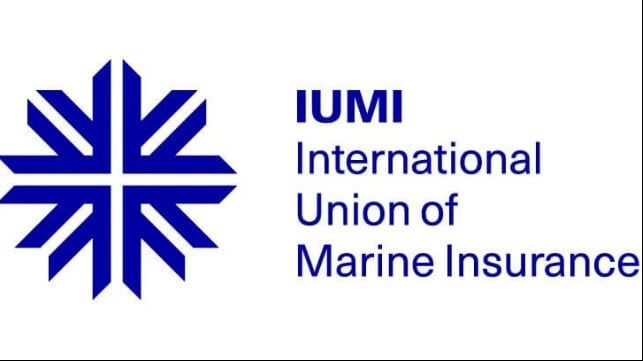2021 Shows Positive Marine Insurance Trends, but 2022 Shows Inflation

The International Union of Marine Insurance (IUMI) today (19 September) presented its analysis of the 2021 marine insurance market trends at its annual conference in Chicago, USA.
The IUMI Global Marine Insurance Report shows that global marine insurance premiums were up 6.4% on 2020, rising to USD 33 bn in 2021. Lifted by a combination of increased global trade volumes, a stronger US dollar, increased offshore activity and higher vessel values, premiums for cargo, hull, offshore energy and marine liability rose in 2021. Insurers in Europe and Asia in particular saw premium growth.
Regionally, global income was split: Europe 47.2%, Asia/Pacific 29.3%, Latin America 10.3%, North America 7.7%, Other 5.5%.
By line of business, cargo continued to represent the largest share with 57.4% in 2021, hull 23.5%, offshore energy 11.8% and marine liability (excluding IGP&I) 7.3%.
Vice-Chair of IUMI’s Facts & Figures Committee, Astrid Seltmann explained:
“Building on the gains made in 2020, 2021 was another positive year for marine insurers. It was the year when global trade saw a tentative recovery, absolute premiums rose, claims impact was benign, and as a result loss ratios improved. However, this position is tempered by the economic uncertainties the world is facing today. We are reporting this data at a time when several shocks have hit a world economy already weakened by the pandemic. There is no end in sight for the war in Ukraine, soaring global energy costs and inflation, a gloomy outlook for trade and the possibility of further climate and pandemic related disruptions. Marine underwriters are navigating some extremely complex issues.”
Offshore Energy
Global premiums from the offshore energy sector continued to rise in 2021, reaching USD 3.9 bn, representing an 6.9% increase on 2020. This is a second straight year of rises, following a six-year period of declines (2014-2019). The demand for offshore energy insurance typically tracks oil prices as projects become viable. Historically, there is an 18-month time lag between improved oil prices and authorised offshore expenditure and unit reactivation. Oil prices remain high, but volatile.
Lloyd’s of London and the International Underwriting Association (IUA) continue to command the majority of the market, with a respective 33.2% and 32.1% market share.
In 2021 claims were lower than premiums collected. However, a shadow still hangs over the offshore energy market in the form of potentially significant unquantified losses still to arise from 2019.
Cargo
The global premium base for the cargo market for 2021 reached USD 18.9 bn, up 9.9% on the back of a stronger dollar and increased global trade volumes. Cargo premium is a reflection of the value of goods transported and global trade volumes.
However, in July 2022 the International Monetary Fund released a pessimistic forecast predicting global economic growth to slow from 6.1 percent last year to 3.2 percent in 2022.
Loss ratios in most markets continued to improve as a result of increased premium volume in combination with recent benign claims impact.,. For Europe, the gross loss ratio for underwriting year 2021 is estimated to end at 50%, while other regions reported the following 2021 accounting year loss ratios: US: 41% (incurred claims), Asia: 45% (paid claims only) and Latin America 43% (paid claims). A return to pre-Covid activity in 2022 is likely to increase the impact of claims on underwriting performance.
Cargo insurers continue to face persistent challenges including rising cases of onboard fires, mis-declared cargoes, worsening severe weather conditions including stronger winds and waves, floods and wildfires. With the increased value accumulation on ever larger vessels and single port sites, the risk of large event losses continues to grow.
Ocean Hull
Global premiums relating to the ocean hull sector increased in 2021 by 4.1% to USD7.8 bn. There was continued strong growth in the Nordic region as well as China, but much weaker in the UK (Lloyd’s) market where the decline of recent years continued.
The overall value of insured vessels rose significantly in 2021, driven primarily by the large increase in containership prices which were up over 35%. Dry bulk and general cargo vessel values also saw gains in 2021, but all other segments were down.
After a subdued year for claims in 2020 when shipping activity, particularly in the high value cruise sector decreased, 2021 saw an uptick of Hull & Machinery claims. However, claims remain low. Total losses stood at 0.06% and partial claims at 0.14% of the total global fleet. Claims cost per vessel were slightly up on 2020, but still at historically low levels. However, rising steel prices and labour costs are expected to impact future hull claims.
As reported in previous years, the frequency of onboard fires in both the engine room and cargo areas continues to cause concerns, particularly for car carriers and container vessels. Fires occurred on over 1% of the containership fleet in 2021 with 0.4% of the fleet experiencing fires incurring over USD 500,000 in claims.
In terms of underwriting profitability, results showed continued improvement. The 2021 underwriting year gross loss ratios for Europe is estimated to end at 65%. This includes some expected increase compared to 2020 which had extraordinarily good results as a combination of rising premiums in combination with extraordinary low claims impact in 2020 due pandemic effects, particularly reduced vessel activity in some segments. 2021 accounting year loss ratios reported for the other regions were: US: 70.5%incurred claims) Asia:67% (paid claims) Latin America: 54% (paid claims). However, a return to full shipping activity, value increases, inflation of various costs impacting repair costs, new vessel designs, propulsion and fuel types are likely to impact claims trends going forward.
The products and services herein described in this press release are not endorsed by The Maritime Executive.
